
In the past few years, the term Nordic noir has attracted the interest of both international audiences and academic scholars. Since its beginning, the new genre has gradually won the critics' appraisal and it is considered today to be at the forefront of European cinema and television productions as well as crime fiction literature. The concept of the term Noir transfers us back to the decades of the 1940s and 1950s, the period during which the legendary Film-Noir flourished mainly through the American film productions Audun Engelstad attempts to examine Nordic noir in the general context of film noir scholarship and stresses that "the emergence of the term Nordic noir parallels the history of film noir" while he also believes that we should consider it as a -more or less- autonomous genre, especially if the term genre "is treated as a discursive concept". Generally, the genre is defined as a literary/artistic movement that adopts a particular mood and style, introduces alternative ways of storytelling while evoking certain emotions from the audience.
There should be a distinction between the Scandinavian Crime Fiction, also known as Scandi-Crime, and Nordic noir. If we set 2009 as the Nordic noir starting point in time, the year that the three novels written by the late Swedish journalist and author, Stieg Larsson, were released as feature films winning cinephiles around the world, then Scandi-Crime should refer to 10-15 years earlier when authors such as Henning Mankell, Håkan Nesser, Peter Høeg, Karin Fossum and Anne Holt were made well-known to the international readers, through their intriguing and exciting crime novels. As for pinpointing the exact date of birth for Nordic noir, there is some controversy between the subject's scholars. A. Engelstad writes that the period between 2009 and 2011, when the Millenium trilogy was adapted to the cinema screens and the Danish legendary series, Forbryderlsen, was aired on BBC (U.K.), should be considered as Nordic noir's starting point. On the other hand, Kerstin Bergman sets 2000 as N.N.'s birthday year, when S.Larsson began writing the first Millenium novel which had been published in Sweden in 2005 by Knopf Publications.
Nordic noir features some common, trademark characteristics that made it stand out from similar genres. The five main characteristics of Nordic noir are: 1)the criticism on the famous Welfare State (in Swedish: Folkhemet) of the Nordic countries, 2) a particular representation of gender and the introduction of strong female protagonists, 3)a certain use of the gloomy Nordic landscape as the most appropriate setting for a crime story to unfold, 4) severe social criticism, which historically began with Maj Sjöwall and Per Wahlöö's Martin Beck Series, and the contemplation of crime as social construction rather than the result of an individual's pathology or mental illness and, 5) innovate ways of storytelling, introducing fresh narrative tropes.
Lisbeth Salander was the first solid female character that made the audiences identify with a troubled young woman, a skilled computer hacker who is determined to survive and take revenge from all those who did her wrong, while at the same time fighting her problems, her antisocial demeanor, the lack of meaningful interpersonal relationships and loneliness. Even before Noomi Rapace embodied Salander and turned her into a popular cult-icon whose name became known even to those audiences who prefer other genres, the character has gained the attraction of many readers who enjoyed the labyrinthine plot and excellent characterization of The Girl With the Dragon Tattoo. So, S. Larsson's protagonist set the example for several Nordic female heroines, the most popular being Saga Noren, played by the Swedish star, Sofia Helin, and Inspector Sarah Lund from the Danish crime series Forbrydelsen which made Nordic noir the first-rate export to the U.K. when aired by BBC in 2011. All the above characters are skilled and extremely dedicated to their job, which more than often has to do with law enforcement, and they also exhibit some character traits that are common: the difficulty in connecting with other people, the problem of expressing their emotions to others, the lack of important romantic relations in their life, and their stubbornness even when everything points to the fact that they are wrong. In an article written by S. Eichner and L. Mikos, the authors state: "the focus on strong, ambivalent women as lead character offer new ways with dealing with problems and establish new forms of conflict that would not arise if the character would be a male".The female perspective is embedded in many Nordic noir books/movies/TV series and it establishes a distancing from the classical, male, hard-boiled stereotypes of the Noir tradition.
Social critique and realism were themes that concerned Scandinavian crime writers from the decades of the 1960s and 1970s, when the duo of Maj Sjöwall and Per Wahlöö, a married Swedish couple of crime authors, wrote the Story of a Crime book series with Inspector Martin Beck as the protagonist in ten, in total, police procedural novels. Both Sjöwall and Wahlöö were Marxists and their ideological positions are evident in their body of work. Through their novels, they attempted to point out major misperceptions that we, as outsiders, have regarding Nordic societies and dismantle the idea of the omnipresent and omnipotent Scandinavian Welfare State that was established in Sweden, in particular. Overall, they challenged the common perception of Nordic countries as prosperous, egalitarian, just societies where the citizens enjoyed a carefree existence without having to confront any large-scale social problems. In many Nordic noir works, the State policies are treated with suspicion while major subjects like the immigration wave and subsequent racism, the treatment of socially vulnerable minorities -either national or otherwise- by the authorities, the corruption and abuse of power, the domestic violence and abuse of women are all brought into the limelight. Andrew Nestingen writes: "by critically representing the Welfare State as a dystopia, Swedish crime fiction has fallen back on a twofold narrative response. In the first, the vigilante hero fights back against the dystopian elements. In the second, a good cop nostalgically stands for community, leading his followers out of dystopia and back to social integration". An example of the first kind of character would be the aforementioned Stieg Larsson's Lisbeth Salander, while the second would be represented by Henning Mankell's Inspector Kurt Wallander.
The most distinctive characteristic of Nordic noir though is its overall mood and atmosphere as it is expressed through the sublime use of images and landscapes in the genre's works. A. M. Waade claims that Nordic noir is stigmatized by its melancholy either in literature or cinema and television productions. There is a kind of tradition for "Nordic Melancholy" which can be traced in the iconic texts written by August Strindberg and Henrik Ibsen, or the paintings by Edvard Munch. Waade writes that: "there are some interesting perspectives on Nordic Melancholy that bring new insights to the analyses of Nordic noir (...) the melancholic ambiguity involves being simultaneously part of something, and yet outside it as well: out of place (displacement) and out of time (nostalgia)". This melancholy is often expressed through Nordic noir's detectives-protagonists such as Harry Hole (Jo Nesbø ), Carl Mørck (J. Adler-Olsen), Konrad Sejer (K. Fossum), Inspector Erlendur (A. Indridason), Ewert Grens (A. Roslund/B. Hellström) and many others. As far as the setting is concerned, we perceive the overall imagery of Nordic noir in dark colors (blue, grey, green, etc.), in alignment with the Nordic over-encompassing cold climate and grey skies. Waade explains that "in Nordic crime series, landscape imageries, panorama views, and opening shots can be used to indicate emotional conditions and melancholic atmosphere". If we drag from our memory certain images of some of the most popular Nordic noir television series such as Bron/Broen, Forbrydelsen, Trapped, and Bedrag, we can comprehend A. M. Waade's above argument, as it seems that the setting is a character in itself and "speaking" in its particular manner.
Some new, innovative ways of storytelling were introduced by many talented Nordic crime authors/producers. for example, te double storytelling, used mainly the Danish public broadcaster, DR, in its television series has replaced certain well-known and -perhaps- overused narrative tropes of the crime fiction genre. Redvall writes that double storytelling "refers to always telling stories that are not only entertaining but which also contain larger ethical and social connotations". Another typical Nordic noir narrative trope is the multiple timeline narrative that we encounter in several novels written by the most acclaimed crime writers such as Jo Nesbø, Jussi Adler-Olsen, Arnaldur Indridason, J. Theorin, Yrsa Sigurðardóttir, and others.
Below, I'm citing a shortlist with the five most detailed and illuminating Nordic noir reference books that will help you broaden your knowledge on the subject and help you expand your horizons. Keep in mind that there is a vast number of relevant articles and essays that can be found online or in specific journals. You can find samples in the limited bibliography of this article. If you want to learn more about each book, click on the titles for a more detailed review.
K. Bergman: "Swedish Crime Fiction: The Making of Nordic Noir"
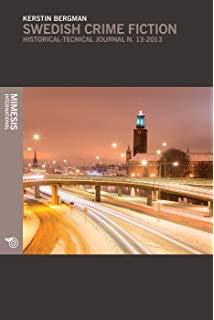
J. Stougaard-Nielsen: "Scandinavian Crime Fiction"
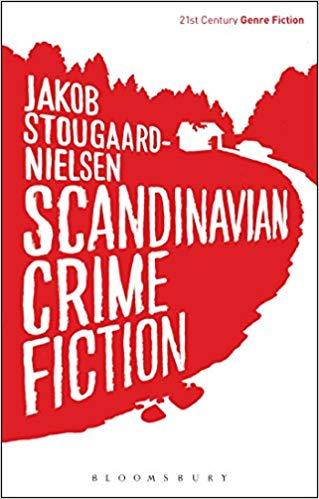
M. Brunsdale: "Encyclopedia of Nordic Crime Fiction"
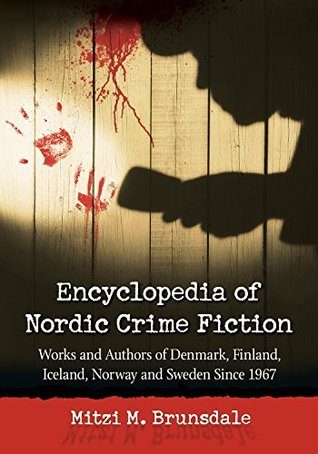
B. Forshaw: "Nordic Noir: The Pocket Essential Guide to Scandinavian Crime Fiction, Film & TV"
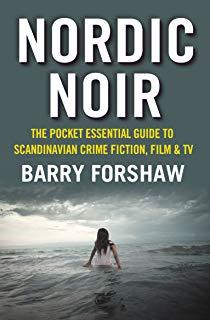
K. Toft Hansen/ A. M. Waade: "Locating Nordic Noir: From Beck to The Bridge"
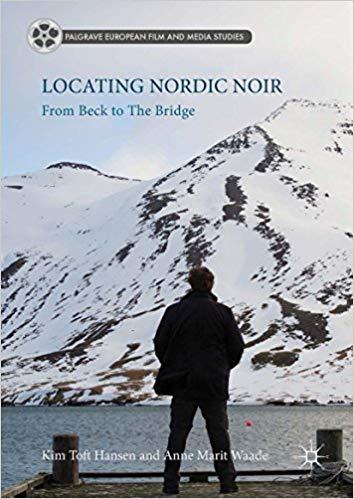
BIBLIOGRAPHY
Agger, G., Waade, A. M., "Media and Crime: Fiction and Journalism", Northern Lights (Vol. 9), 2011.
Eichner, S, Mikos, L (2016) "The Export of Nordic stories: the international success of Scandinavian TV drama series", Nordicom-Information 38(2): 17–21.
Nestingen, A., "Killer Research: Scandinavian Crime Fiction Scholarship Since 2008", Journal of Scandinavian Cinema (Vol. 2), 2012.
Toft Hansen, K., European Television Crime Drama and Beyond, Palgrave European Film and Media Studies, 2018.
Toft Hansen K., Waade, A.M., Locating Nordic Noir: From Beck to The Bridge, Palgrave European Film and Media Studies, 2017.
Waade, A. M., "Melancholy in Nordic Noir: Characters, Landscapes, Light and Music", The International Journal of Television Studies (Vol. 12), 2017.
Redvall, E.N., "Dogmas for Television Drama: The Ideas of One Vision, Double Storytelling, Crossover and Producer's Choice in Drama Series from the Danish Public Service Broadcaster DR", Journal of Popular Television (Vol.1), 2013.